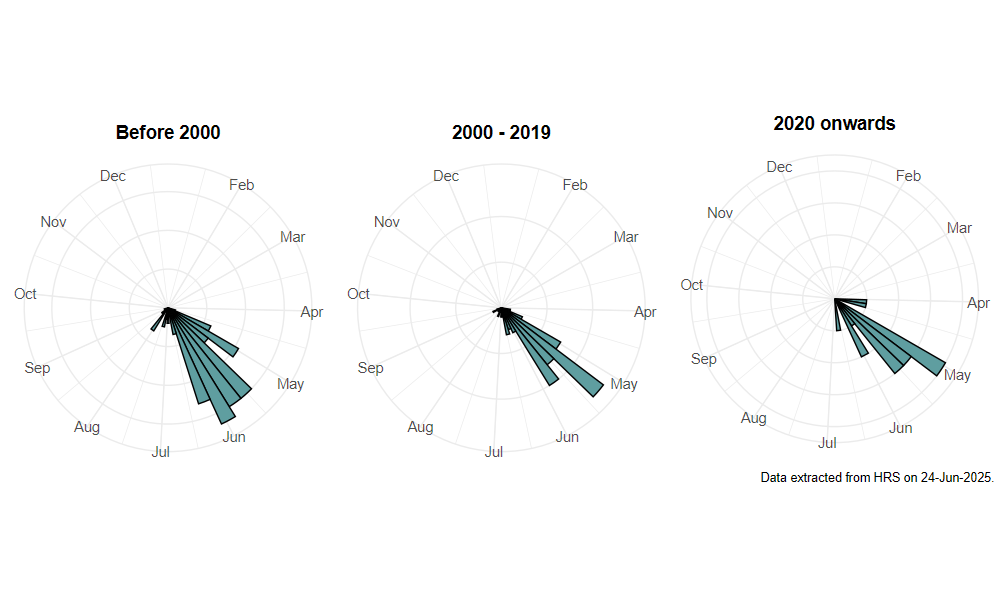Orthonevra brevicornis (Loew, 1843)
Identification
Identification difficulty = 3. ![]()
![]() according to Ball & Morris, 20241
according to Ball & Morris, 20241
Biology
The larva is aquatic, living in accumulations of decaying vegetation, especially in mesotrophic or base-rich seepages in fens, meadows and occasionally woods. Adults can be found in marshes and fens.
Flight period
The following plots show the number of unique records per week excluding those reported to be of immature stages.

Status
Was listed as 'Notable' by Falk, 19912, but dropped from this status by Ball & Morris, 20143 who consider it LOWER RISK.
Distribution
This scarce species is widely distributed in England, though possibly more frequent towards the south and east. There are scattered records from both Scotland and Wales.

Trends
The following plots show the Frescalo TFactor vs year and a map of the rescaled frequency (all records) for the species.
-
Ball, S., & Morris, R. (2024). Hoverflies of Britain and Ireland. WILDGuides (3rd ed.). Oxford: Princeton University Press. ↩
-
Falk, S. (1991). A review of the scarce and threatened flies of Great Britain. ( No. 39). Research and Survey in Nature Conservation (pp. 1–194). Peterborough: NCC. ↩
-
Ball, S., & Morris, R. (2014). A review of the scarce and threatened flies of Great Britain. Part 6: Syrphidae. ( No. 9). Species status (pp. 1–130). Peterborough: JNCC. ↩